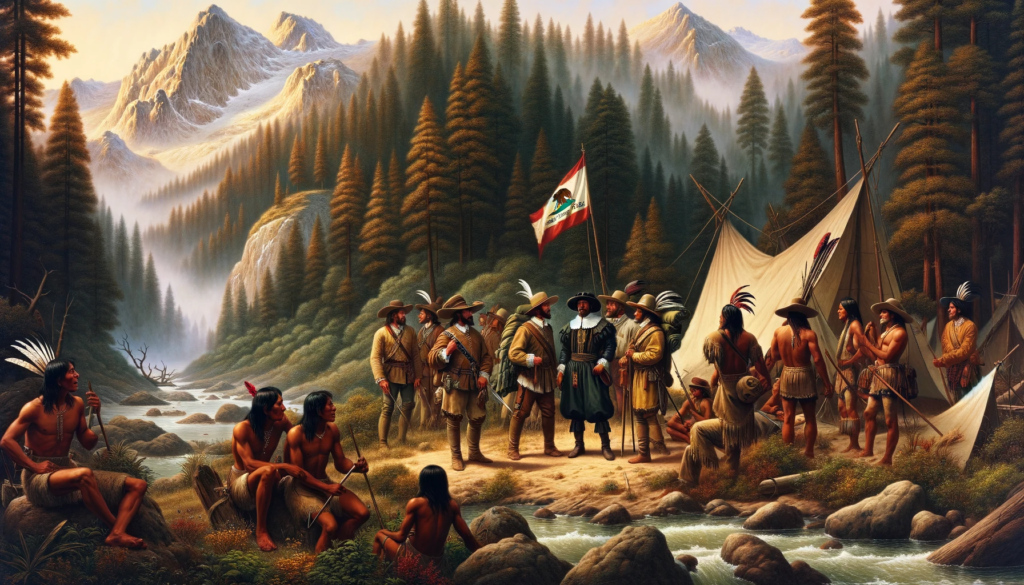Spanish Exploration and Colonization of Northern California
California’s history is a tapestry woven with threads of diverse cultures and experiences. Among these, the Spanish exploration and colonization of Northern California stand as a fascinating chapter. This article takes you on a journey through time, unraveling the gripping story of Alta California and its transformation under Spanish rule.

The Early Spanish Interest
Before delving into the history of Alta California, it is essential to understand the broader context. The Spanish Empire had a profound interest in the vast territories of the New World, and California was no exception. Spanish sea captains, such as Juan Rodriguez Cabrillo, began exploring the Pacific coast as early as 1533, even before the famous voyages of Columbus. However, colonization was a gradual process that unfolded over centuries.
Gaspar de Portolá’s Expedition (1769)
The turning point in Spanish colonization efforts came in 1769 when Gaspar de Portolá led an expedition to Alta California. The journey, which started in Baja California, aimed to establish a Spanish presence north of California. The expedition resulted in the founding of Monterey, a significant milestone in the history of California. Portolá’s efforts laid the groundwork for Spanish colonization in the region.
The Influence of Spanish Missions
One of the most enduring legacies of Spanish colonization in Alta California was the establishment of missions along the California coast. These missions, often founded by Franciscan friars, played a crucial role in converting Native Californians to Christianity and introducing European agriculture and livestock to the region. These missions would go on to become centers of economic, social, and religious activity.
Spanish Settlements and Colonization
Spanish settlers arrived in Alta California, bringing with them European customs, language, and culture. The Spanish Crown aimed to exert control over the territory, and they built presidios (forts) to maintain order and protect against potential threats. As a result, a series of settlements began to take shape along the California coastline, including San Francisco Bay Area.
Native California: Impact and Resistance
The arrival of the Spanish had a profound impact on the indigenous population of California. Native Californians learned to speak Spanish and were introduced to European technologies, but they also faced displacement and forced labor. This period witnessed both cooperation and resistance as Native Californians navigated the changes brought by Spanish colonization.
California’s Role in the Spanish Empire
Alta California played a significant role in the Spanish Empire as it contributed to the empire’s wealth and influence. The region’s primary exports, such as hides and tallow, became vital commodities in far-off New Spain (Mexico City). California’s location along the Pacific coast made it strategically important for the Spanish Empire.
The End of Spanish Rule
The Spanish period in California came to an end in the early 19th century. Mexican independence from Spain in 1821 led to a shift in power. California became a Mexican territory, but the influence of the Spanish colonial era remained strong.
Legacy of Spanish Colonization
The impact of Spanish exploration and colonization continues to be felt in California’s culture and history. The Spanish influence is visible in the architecture, place names, and traditions that have endured over the centuries. Many of the missions founded during this period still stand as historical landmarks.
California’s Journey to Statehood
California’s story did not end with Spanish colonization. The region went through various transformations, including becoming part of the Mexican Republic and later an independent entity known as the California Republic. Eventually, California joined the Union in 1850 as the 31st state.
Conclusion
The Spanish exploration and colonization of Northern California have left an indelible mark on the state’s history. From the first Spanish explorers like Juan Rodriguez Cabrillo to the establishment of missions and settlements, this period laid the foundation for modern-day California. The enduring legacy of Spanish culture and influence continues to enrich the diverse tapestry of the Golden State. Explore the remnants of this captivating history and discover the secrets that lie beneath the surface of California’s past.

